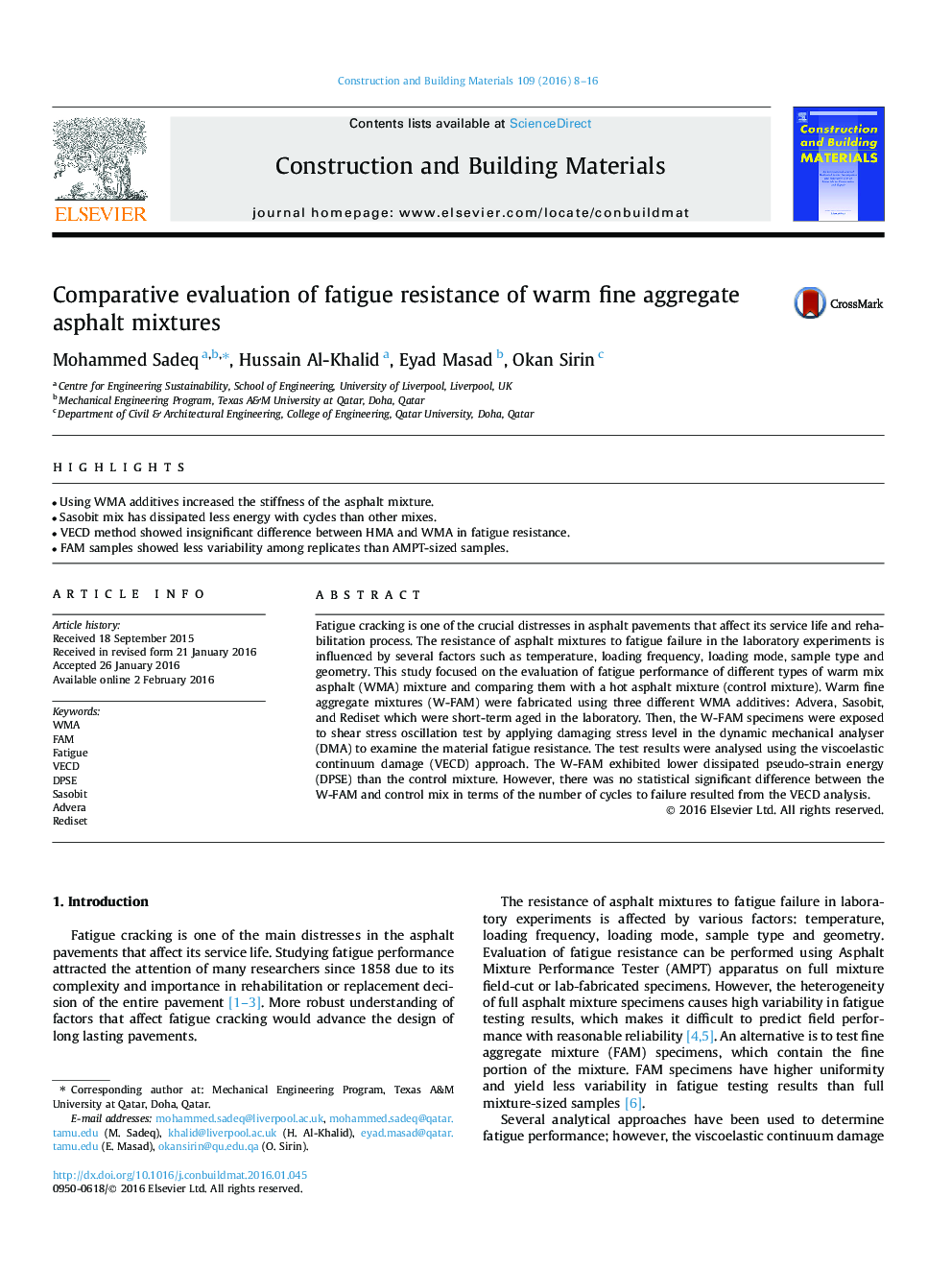| Article ID | Journal | Published Year | Pages | File Type |
|---|---|---|---|---|
| 256270 | Construction and Building Materials | 2016 | 9 Pages |
•Using WMA additives increased the stiffness of the asphalt mixture.•Sasobit mix has dissipated less energy with cycles than other mixes.•VECD method showed insignificant difference between HMA and WMA in fatigue resistance.•FAM samples showed less variability among replicates than AMPT-sized samples.
Fatigue cracking is one of the crucial distresses in asphalt pavements that affect its service life and rehabilitation process. The resistance of asphalt mixtures to fatigue failure in the laboratory experiments is influenced by several factors such as temperature, loading frequency, loading mode, sample type and geometry. This study focused on the evaluation of fatigue performance of different types of warm mix asphalt (WMA) mixture and comparing them with a hot asphalt mixture (control mixture). Warm fine aggregate mixtures (W-FAM) were fabricated using three different WMA additives: Advera, Sasobit, and Rediset which were short-term aged in the laboratory. Then, the W-FAM specimens were exposed to shear stress oscillation test by applying damaging stress level in the dynamic mechanical analyser (DMA) to examine the material fatigue resistance. The test results were analysed using the viscoelastic continuum damage (VECD) approach. The W-FAM exhibited lower dissipated pseudo-strain energy (DPSE) than the control mixture. However, there was no statistical significant difference between the W-FAM and control mix in terms of the number of cycles to failure resulted from the VECD analysis.
